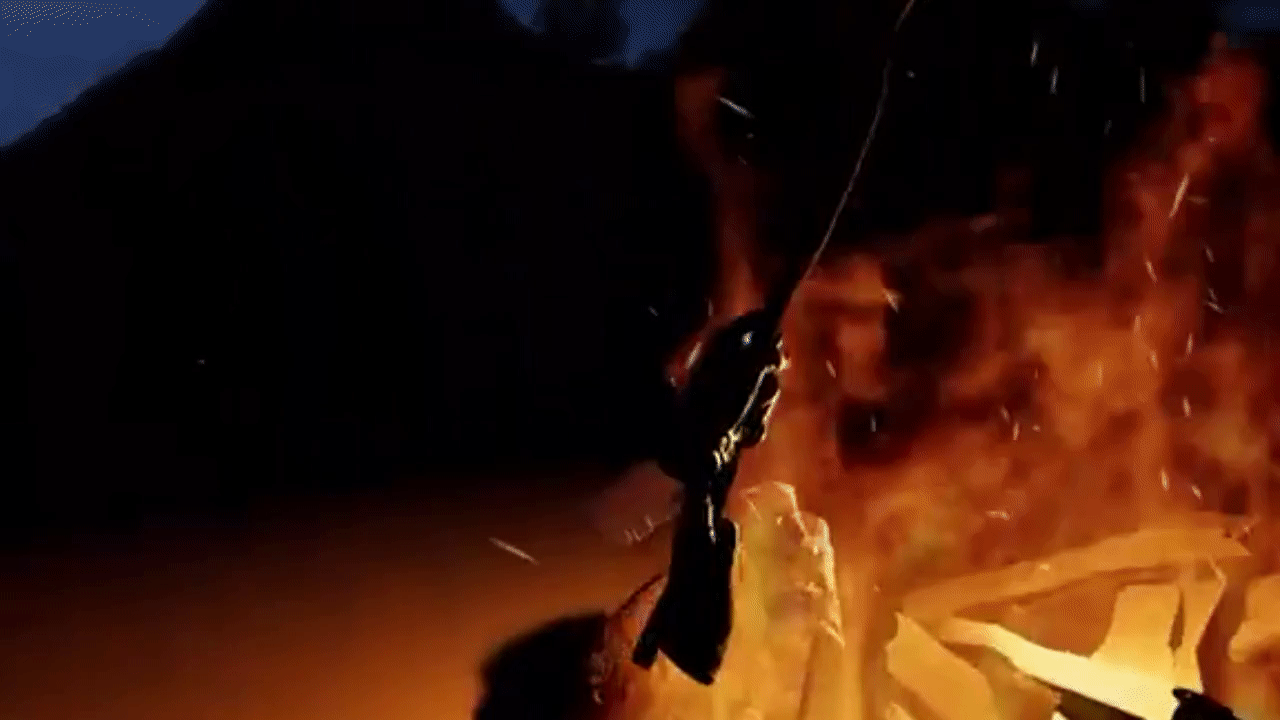Campfire




Collaborator: Klemen Lilija.
Showcased at Copenhagen Culture Night 2019.
Why does each of us have a single body? In the physical world, this is just the way things are. We are born, live, and die while experiencing reality from within our body. In VR, it doesn’t have to be that way. We can put one person into multiple bodies, or multiple persons into one body.
This project is an example of the latter. We place two users into one avatar. The control of the avatar is shared such that each user controls one hand. When both hands interact with an object, the control is shared such that each user’s hand contributes half of the motion and rotation for the shared object. In other words, the system finds the midpoint between their hands and places the shared object there.
Klemen and I were asked to develop a project for the Copenhagen Culture Night on behalf of the university to showcase our department’s research into VR. This is what we came up with. We hosted the VR experience for an entire night; from early evening until midnight. Hundreds of people stopped by try it, and it was a particularly big hit for the many children who attended the event. I hope that it will inspire some future XR creators in a decade or two. Many of the attendants were also curious about the science about the experience, and it’s a bit of an eye-opener for many people to be introduced to embodiment research and how it might be applicable to experiences like this. Do you feel a sense of agency over a shared body? Is that modulated by knowing that you share it with a person, or is the sense the same if you share it with an AI?
It was both challenging and rewarding to develop the design for what sharing a body actually looks like. Our system is pretty flexible in that it allows variable degrees of agency over different parts of the avatar. For example, the system can be changed so that one user contributes 75% or 90% of the motion for a body part, while the other user would contribute 25% or 10%. There are also certain parts of the avatars that cannot be intuitively shared. For example, we did not implement sharing for the head due to motion sickness concerns.
We built the software for the experience coming straight off the Unite 2019 conference, where Unity employees had enthusiastically encouraged us to implement it in HDRP. It was not quite ready for prime time, so debugging an advanced rendering pipeline for VR in time for the deadline was an interesting development experience, to say the least.
No publications have come of this project as of yet. However, I used it as a basis for a position paper on the effects of extreme avatars on interpersonal space, which got me invited to the social VR workshop at CHI 2020. In case you’re curious, you can access the position paper below.
A special thanks to Mike Ambinder of Valve Corporation for hooking us up with the prototype Knuckles controllers used for the experience.